This is a Certo Dollina III, a 35mm rangefinder camera made by Certo Camera Work Dresden in 1938. The Dollina III was the most advanced in the Dollina line of 35mm cameras, improving on the earlier models with a larger body with a built in coupled rangefinder. The Dollina series competed with the Kodak Retina, using the same type of 35mm film, and offering competing features at a lower cost. The Dollina III was a short lived model, and was replaced by the Super Dollina which had a more streamlined body, but the same features.
Film Type: 135 (35mm)
Lens: 5cm f/2.8 Carl Zeiss Jena Tessar uncoated 4-elements in 3-groups
Focus: 0.9 meters to Infinity
Viewfinder: Separate Viewfinder and Split Image Coupled Rangefinder
Shutter: Compur-Rapid Leaf
Speeds: T, B, 1 – 1/500 seconds
Exposure Meter: None
Battery: None
Flash Mount: None
Weight: 552 grams
Manual: https://www.cameramanuals.org/pdf_files/dollina.pdf
The 1930s saw the release of many cool cameras, but none were more significant than the rise of the 35mm “miniature” camera. The earliest days of photography saw very large cameras that were difficult to move around. Around the turn of the century, “bicycle” and “vest pocket” cameras became popular as they were more portable, but many of these models were still quite large and didn’t fit into small pockets.
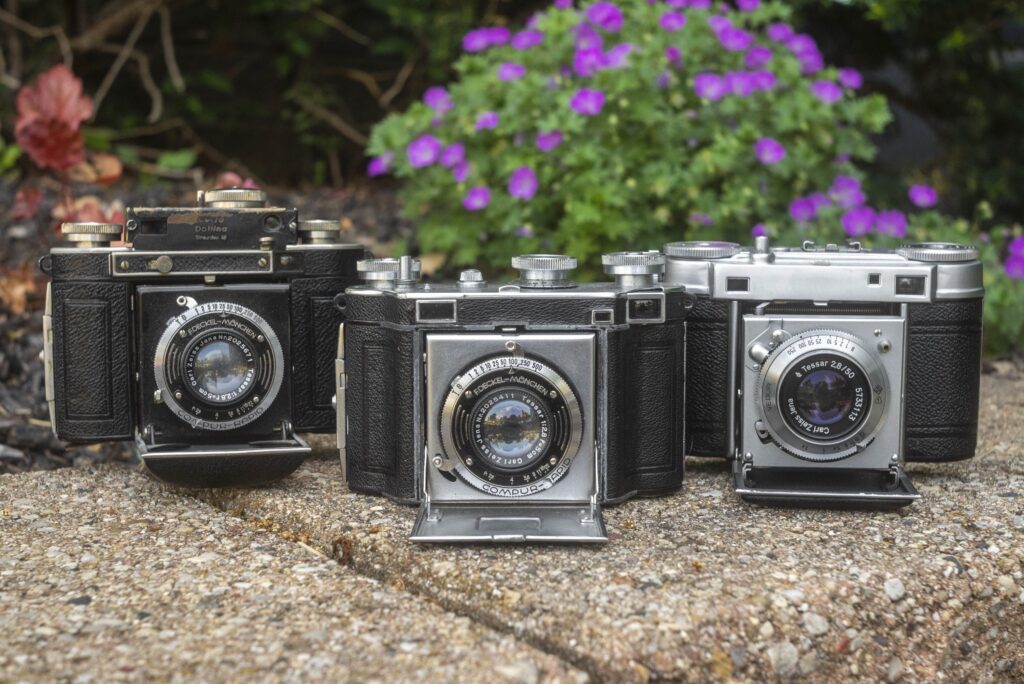
In 1934, Eastman Kodak released a new type of daylight loading film cassette called the “Type 135” cassette which helped to standardize 35mm film to be used in what would become a very hot segment in photography. Kodak’s new film was compatible with the already released Leica and Zeiss-Ikon Contax cameras, but included support for a new camera called the Kodak Retina, designed by Dr. August Nagel.
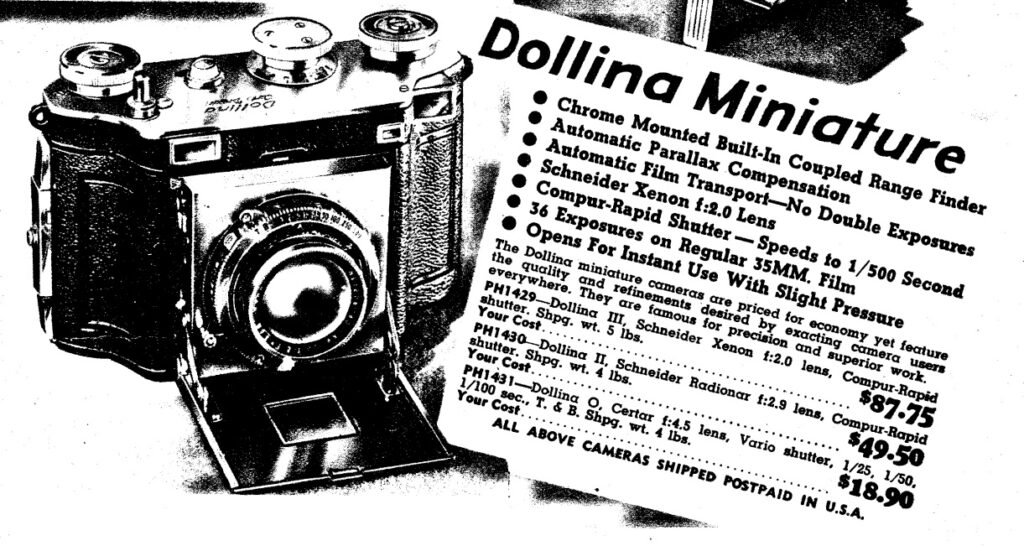
The Retina proved to be an immediate success. The combination of good build quality and optics, along with a compact and easy to use design drew interest from many photographers who previously would have thought 35mm cameras to be too small to be useful. As interest in small 35mm cameras grew, other optics companies would release their own versions of the Retina with similar specs. In 1935, Dresden based camera makers Welta and Certo were the first two to the table. Welta with a compact camera called the Weltini and Certo with the Dollina.
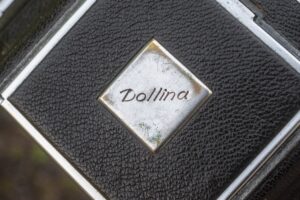
Early Dollina models were pretty basic and lacked a rangefinder, but had a distinct advantage to their Kodak counterparts which was the ability to have a focusing rack that worked independently of the film door. A limitation of both the Retina and Weltini cameras was that the lens needed to be retracted to the infinity focus position before the door could close. Attempting to force the door closed with the lens out of position could cause damage to the camera. With Certo’s method, there was no requirement to set the lens to infinity. Furthermore, you could set the focus to any given distance, close the camera, and then reopen it later and it would return to the previous distance without needing to be changed.
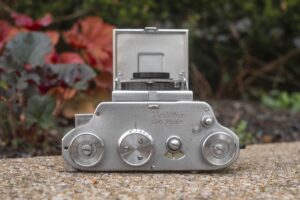
Like the first Retina, the first Dollina lacked a rangefinder and would be called the Dollina I. A later Dollina II would come in 1936 featuring a coupled rangefinder. The design of the rangefinder was permanently attached to the top plate of the camera and was not fully integrated into the body. Although this worked fine, it meant that the rangefinder assembly was outside of the main body and more susceptible to damage.
This was improved in 1938 with a model called the Dollina III which shared most of the same features of the Dollina II, but with the rangefinder fully integrated into the body. It featured most of the same lenses as the earlier Dollinas, starting with a Steinheil Cassar f/2.9 on the low end to an f/2 Schneider Xenon on the high end. The Dollina III had a cleaner design, but in order to make everything fit, the body was physically larger, creating a camera that was a bit thicker and stranger looking than other 35mm rangefinder cameras.
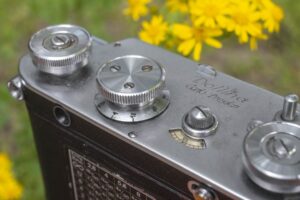
I’ve been fortunate to handle all but the original Dollina I models and they’re all well built examples of pre and post war German cameras. They often come with excellent Schneider or Zeiss Tessar lenses, delivering excellent image quality and a relatively simple operation. The Dollina III was one that mystified me as the post war models failed to innovate and fell behind the competition in features and design, and the Dollina II, while a nice camera suffered from poor rangefinder calibration. The design of the rangefinder, which was grafted on top of the body, had a fault in which if a single screw backed out of the focus knob, the entire rangefinder could lost its calibration. Dollina IIs are often found with inoperative rangefinders as a result, and even after re-calibrating them, can easily fall back out of sync.
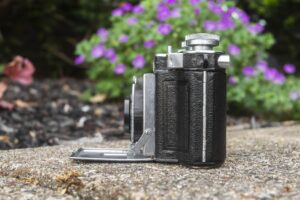
The Dollina III is that right balance of pre war design, features, but with a body that didn’t have the fault of the Dollina II. The problem was, they’re pretty rare, and as a result, often sell for higher than other Dollina models, especially in good condition.
The version I have here is in excellent condition, with only some oxidation of the chrome, but otherwise the bellows are still light tight, the leather body covering is entirely in tact, the lens is crystal clear, and the rangefinder is accurate and easy to use.
Unlike the Retina or Weltini, the Dollinas all have a bottom hinged front door. This has the advantage of giving you easy access to the shutter controls from either side of the camera, however the distance that the front door extends when open is quite far, making the camera very thick front to back with the door open. On the plus side, you can open and close the front door without having to set the focus back to infinity.
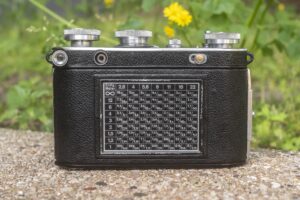
Like other pre war rangefinders, the viewfinder and rangefinder are in two separate windows. The viewfinder here is at the extreme edge of the camera, almost so far as to make it strange to use. The split image rangefinder is bright and easy to use, but is very small. If you’ve never used a camera this old before, the tiny windows will take some time to get used to.
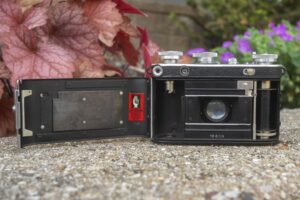
Although featuring a completely different design than the earlier Dollina II, the focus knob is in the same location, right smack in the middle of the top plate. This location does take some getting used to, but with a little practice, ends up working quite well, especially when compared to the tiny focus rings on the front of some early cameras.
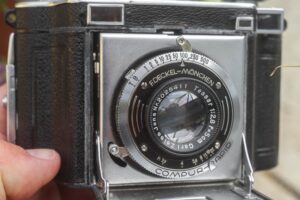
One final quirk of the Dollina III which was common back then, but quickly fell out of use was a film advance lock on the back of the camera, which requires you to manually release it before advancing the film to the next frame. All 35mm cameras have some kind of interlock which prevents you from over advancing the film, but on cameras like the Dollina, Argus C3, and Wirgin Edinex, a little lever must be pressed before turning the film advance knob to disable this lock. It is not difficult to do, but just an extra step that users of later cameras would not be used to.
Before I ever handled a Certo Dollina III, I was curious if the improvements over the Dollina II, but less elegant design than the Super Dollina would add up to an interesting camera, and I can say that most of the changes are positive. Sure, the camera looks a little bulbous and the focus knob is in an uncommon location, but one of the biggest appeals of collecting and shooting old cameras is experiencing all of the strange oddities and dead ends that were produced over the years. The Dollina III has a lot going for it – pre war German quality, an excellent lens, and ergonomics that are just strange enough to be interesting, but not enough to get in the way of shooting.
Satisfied that the camera was in good enough working order to shoot a roll of film in it, this past spring I loaded in a fresh roll of Fuji 200 and hoped to capture some spring colors. I used the camera for casual snapshots as I went about my daily business.
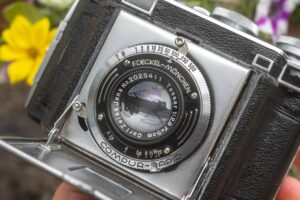
As you might expect from a pre war Tessar, the images came out very sharp with minimal optical distortion. I am used to small amounts of vignetting on many Tessar equipped cameras, but none can be seen in any of the images above. The lack of a lens coating rendered the colors with a muted, somewhat pastel palette and lower contrast, but otherwise looks really nice. In fact, I might say that I prefer the look of shooting color film through uncoated lenses as the imperfect results have a very distinct look which you cannot achieve with later, more technically correct lenses.
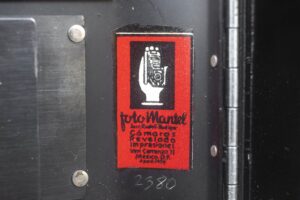
Using the camera was a pleasant combination of vintage quirkiness but still familiar enough to where I didn’t need to consult the user’s manual before or while out shooting. There is nothing worse than being out with a vintage camera and getting stumped by some control you hadn’t familiarized yourself enough with, and having to search Mike Butkus’s site on your phone hoping for a manual. If you were going to spontaneously shoot a Certo Dollina III, my advice would be to practice loading the camera and familiarizing yourself with the film transport lock before taking it out, otherwise the experience is like any other vintage camera.
Although I first thought the location of the focus wheel was strange, while out shooting, I found its location to be a non-issue. I actually grew to like it, preferring its location to that of other folding cameras in which you have to reach around the door to focus. In addition, I also loved how you can close and re-open the camera quickly, without having to remember to focus to infinity and then refocus again after opening it.
The Certo Dollina series always has been and always will be seen as a lesser competitor to the Kodak Retina, and from a sales and collector’s standpoint, this is true. The Retina was sold for a longer amount of time and had more “good” models than the Dollina did, but of the models I’ve shot in the “Retina-esque” segment, the Certo Dollina III is my favorite. The camera is not easy to find in good condition, but if you have the opportunity to snag one for a price you are comfortable with, I strongly recommend it!
Related Posts You Might Enjoy
External Links
http://camera-wiki.org/wiki/Dollina#The_Dollina_III
https://www.collection-appareils.fr/x/html/appareil-6142-Certo_Dollina%20III.html

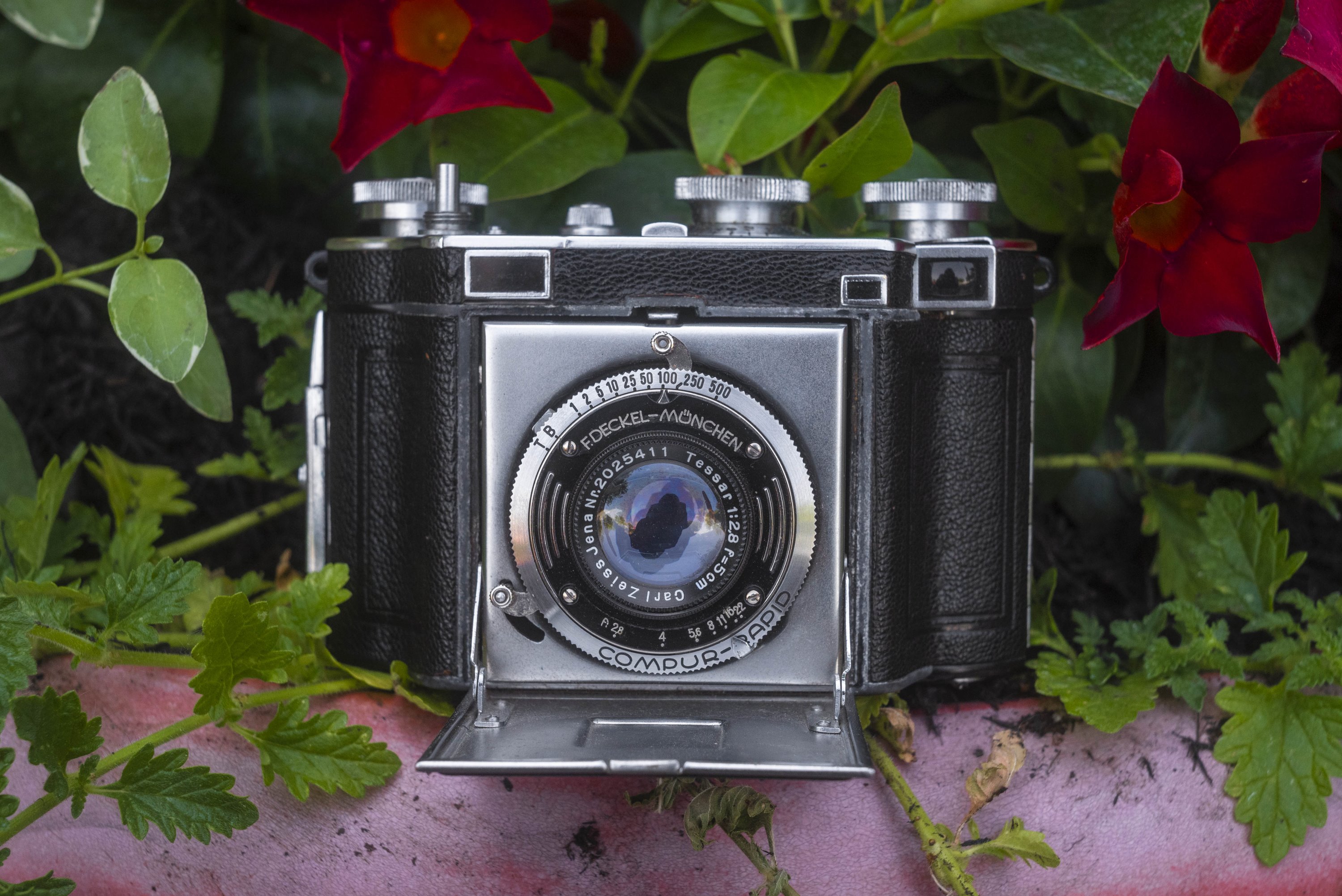
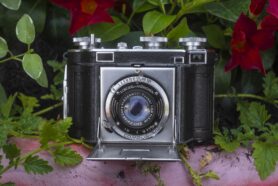
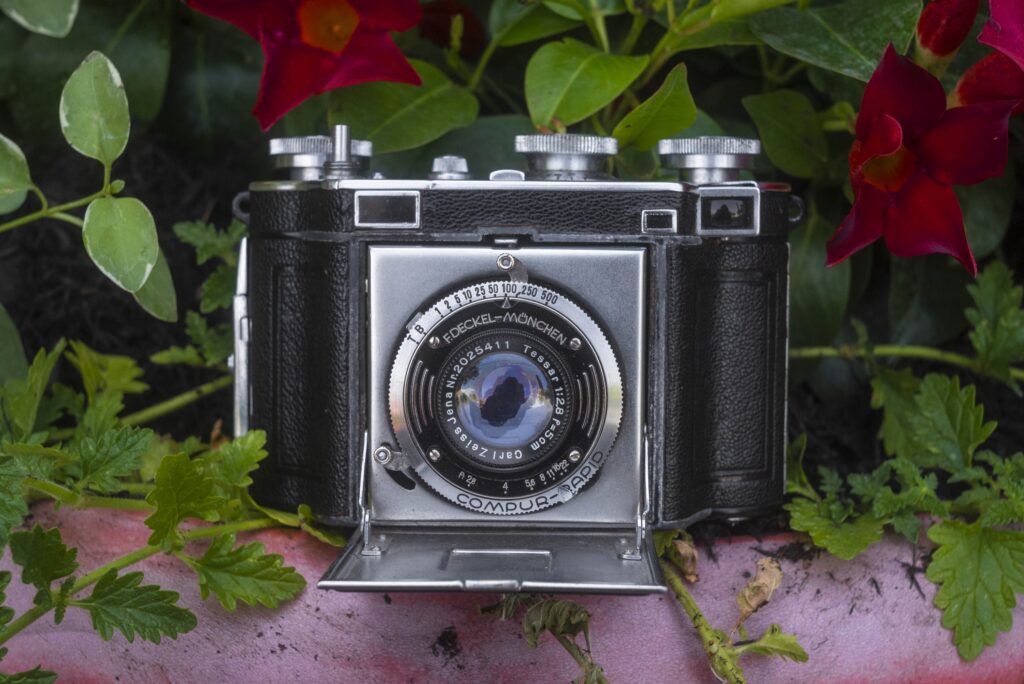
















Consulting Mike Butkus’ website for a manual on your smartphone while out shooting with a vintage camera: Done that more than once.
Very recently, I had loaded up what I thought was a perfectly working and mint condition Kowa Six and was out shooting. I made it to the 5th exposure and the camera locked up. Thinking I pressed the wrong button or did something in the wrong order, I desperately loaded up the manual from Butkus and read it, looking for any shred of hope that I could reset it. Sadly, it appears the camera just died mid-roll. Such is life of someone who regularly tests old cameras!
I got one of these probably about the same time you posted this review. I bought it among a bunch of cameras that had been sitting on display somewhere and then put away, so most were in need of work. One of them was a Dollina III — cosmetically pretty bad but the shutter actually seems pretty good. The lens (Radionar) seems OK — uncoated so it’s kind of hard to evaluate. Removing the front has eluded me so far since I can’t budge it.
The rangefinder glass needs cleaning but it seems accurate. However, it’s the viewfinder that has me stumped. Really dingy, and what I can see through it looks like a real tunnel — just a very small area of the viewing area is visible. So, pretty much useless. I’m very interested in your impressions of your example’s viewfinder. It could be that mine is missing some glass? (And any thoughts on how to get in there and clean it? I’d hate to have to take off the top of the camera to do it!)
Thanks!
I’ll admit, the viewfinder on mine is at a strange angle, and not ergonomically good for seeing through, but once I get my eye in the right position, I can see through it clearly. From how you describe yours, it does sound to me like there is a glass element missing, dislodged, or perhaps there is some other obstruction in there. Sadly, I can’t offer you any advice in how to open up the camera as I’ve never done it, and it does not look like it would be an easy job. You’d probably have to start with removing all 5 screws on the top plate and all of the knobs to get it off, and then maybe you could get inside the viewfinder to see what is going on or clean it. As much as I liked my camera, I don’t know that disassembling it to clean the viewfinder and possibly make the camera worse, would be worth it, but that’s just my opinion.
I got one of these myself about the same time as you posted this writeup. Cosmetically mine is pretty rough but the shutter works well (except the longest speeds) and the rangefinder seems accurate, though it could stand cleaning.
The problem is that the viewfinder is basically unusable — VERY dim and the field of view is tiny, unmagnified. I wonder if there are missing optics. So I’m interested in what the viewfinder is on yours, and whether you have any advice on opening it up to clean it. Thanks!
It’s a neat camera, very unusual design.